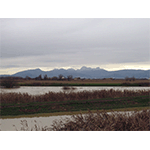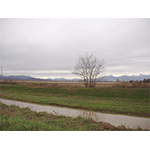The former Lake of Bientina
The lake of Bientina or of Sesto was, still in the first half of the 19th century, the biggest lake in Tuscany. Not far from the Padule di Fucecchio (the Fucecchio marches) and occupying the basin between the plain of Lucca and the the Arno River, it was controlled partially by the Grand Duchy of Tuscany and partially by the Duchy of Lucca.
The discussion over regulating the vast wet zone involved such great scientists as Benedetto Castelli, Giovanni Alfonso Borelli, Vincenzo Viviani, and later Tommaso Perelli. From 1756 to 1763 Leonardo Ximenes realised a complex system of canals. One of them connected the lake to the Arno River, for the purpose not so much of draining the area as of ensuring constant exchange of the waters to solve the problem of insalubrious air. In reality, this exchange of water was not achieved, but intense discussion on the lake continued. In the 19th century XIX Lorenzo Nottolini proposed a project, which was to remain on paper, for the joint draining of the Bientina and Massaciuccoli areas. In 1852 Grand Duke Leopold II of Lorraine approved the land reclamation project of Alessandro Manetti, in which the Imperial Canal was deviated under the bed of the Arno through an underground duct (the Botte).
In November 1995, in the area of the former Bientina Lake, the first Natural Protected Area of Local Interest in the Region of Tuscany was instituted, important especially for its hydrophilic forest of black alder trees.
****************************
Texts by Graziano Magrini
English translation by Catherine Frost
Last update 30/gen/2008





